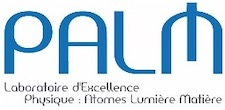|
|
|
|
Description The first Interdisciplinary Summer School Chemical and Physical Probes for Biology 2023: how to spy on cell dynamics? (ChemPhysBio2023) is an annual thematic school organized by the Institute for the Sciences of Light and BioProbe of Paris-Saclay University. Course overviewThe fine understanding of molecular mechanisms in native biological systems is an important step in rationalizing, preventing and ultimately curing diseases. Photonic imaging plays an important role in this field. Quantitative imaging experiments designed to answer complex biological questions require the implementation of efficient probes and adapted imaging setups and data processing workflows. This interdisciplinary school will provide an overview of these different chemical, physical and biological aspects. It will offer also interactive and interdisciplinary workshops to learn how to communicate effectively between disciplines as well as two half-days of hands-on. AudienceThis high-level training opportunity is aimed at newcomers to the field, master and doctoral students, post-doctoral fellows and junior researchers, giving them the opportunity to discover the research laboratories of the Université Paris-Saclay working in this discipline. 20 interdisciplinary trainees will be selected on the basis of their motivation. Learning outcomesParticipants will gain an overview of strategies for quantitative, spatial, and temporal exploration of biological events: from the biological question to probes and instruments. Courses are divided into basic lectures, more advanced courses, and research seminars. Participants will develop their ability to collaborate and communicate with colleagues from other disciplines to initiate and conduct interdisciplinary projects. Modules/resources Lectures:
Hands-on:
Organizing committee
SPONSORS
We thank you for your generous support!
|
| Online user: 2 | Privacy |

|



